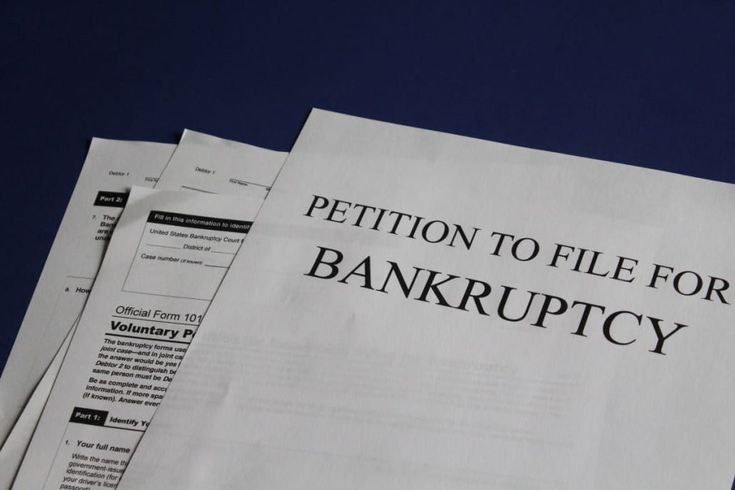
Bankruptcy is a legal process that offers a lifeline to individuals and businesses overwhelmed by debt. It’s akin to pressing a financial ‘reset’ button, providing a structured way to address insolvency issues. While it can be a daunting prospect, it’s not an uncommon occurrence. In fact, in the United States alone, there were over 387,000 bankruptcy filings in the year 2022. This figure underscores the reality that financial turbulence can affect anyone, from small start-ups to large corporations.
The reasons behind these filings are as varied as the entities involved. For some, it’s the accumulation of personal debts, such as medical bills, that tips the scales. For others, it might be the result of business ventures that didn’t pan out as planned. Regardless of the cause, the implications are significant. In California, for instance, the highest number of bankruptcy filings in the US reflects the widespread impact of financial distress. Yet, it’s important to remember that bankruptcy isn’t the end of the line; it’s a chance to wipe the slate clean and start afresh, armed with new insights and a clearer path to financial stability.

The causes of bankruptcy
Bankruptcy often comes down to a few common causes, and understanding them can help prevent it. Here’s a detailed look at the main reasons:
Loss of Income
This is a big one. Imagine you’re running a tight ship, and suddenly, your main source of money dries up. It could be due to job loss or a significant drop in business revenue. Without that steady income, paying bills and debts becomes a struggle. It’s like a domino effect; one missed payment leads to another, and before you know it, you’re in over your head.
Medical Expenses
Health is wealth, they say, but when illness strikes, the medical bills can pile up fast. Even with insurance, the costs can be overwhelming. If you’re already living paycheck to paycheck, a health crisis can push you into bankruptcy. It’s a sad truth that many people face.
Unaffordable Mortgage or Foreclosure
Owning a home is part of the dream, but what if the mortgage becomes too much to handle? Sometimes, people get approved for loans that are just too big, and if the housing market takes a turn or interest rates spike, they find themselves unable to keep up with the payments. Losing a home to foreclosure is a painful experience that can also lead to bankruptcy.
Overspending
It’s easy to get caught up in spending more than you earn, especially with credit cards and loans so readily available. But living beyond your means is a sure-fire path to financial trouble. When the bills come due, and you can’t cover them, bankruptcy might be the only way out.
Providing Financial Assistance
Helping out family or friends with money can be generous, but if you’re not careful, it can also lead to your own financial downfall. If you lend out more than you can afford to lose, and those loans aren’t repaid, your financial stability can be jeopardized.
How you can prevent your business from bankruptcy
They are many ways you could use to prevent your business from bankruptcy and they include the following;
1. Assess and Reorganize Your Finances
It’s essential to have a clear picture of your financial situation. Look at your cash flow, debts, and expenses. If you’re spending more than you’re earning, it’s time to reorganize. Create a budget that prioritizes essential expenses and reduces or eliminates unnecessary costs. This might mean renegotiating contracts or finding cheaper alternatives for services and supplies.
2. Improve Cash Flow Management
Cash flow is critical for business survival. To manage it effectively, invoice customers as soon as possible and follow up on overdue payments. Consider offering discounts for early payment to encourage faster cash turnover. Also, keep an eye on inventory levels to avoid overstocking, which ties up cash.
3. Restructure Debt
High levels of debt can lead to bankruptcy. Talk to your creditors about restructuring your debt. This could involve consolidating multiple debts into one with a lower interest rate, extending payment terms, or even reducing the total amount owed.
4. Diversify Revenue Streams
Relying on a single source of income is risky. Look for ways to diversify. This could involve expanding into new markets, developing new products, or adding services that complement your existing offerings. Diversification can provide stability and reduce the risk of bankruptcy.
5. Seek Professional Advice
Don’t hesitate to get professional financial advice. Accountants, financial advisors, and credit counselors can offer insights and strategies that you might not have considered. They can help you make informed decisions about debt management, cost reduction, and revenue generation.
6. Monitor Market Trends and Adapt
Stay informed about trends in your industry and the broader economy. Being adaptable can help you anticipate financial challenges and pivot your business strategy accordingly. This might involve changing your product line, adjusting your pricing strategy, or finding new ways to deliver value to your customers.
7. Increase Marketing Efforts
Effective marketing can attract new customers and increase sales. Analyze your target market and invest in marketing strategies that have the highest return on investment. This could include online advertising, social media campaigns, or networking events.
8. Reduce Operational Costs
Look for ways to streamline your operations and reduce costs. This could involve automating processes, downsizing your office space, or renegotiating supplier contracts. Every dollar saved can help prevent bankruptcy.
By implementing these strategies, you can work towards stabilizing your business’s finances and avoiding the pitfalls of bankruptcy. Remember, the key to preventing bankruptcy is to act proactively. Monitor your finances regularly, make adjustments as needed, and don’t be afraid to seek help when necessary. Your business’s future may depend on the actions you take today.


















